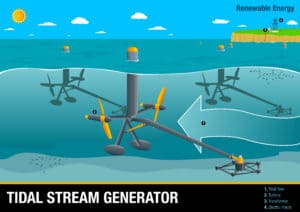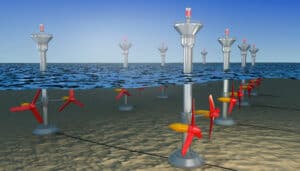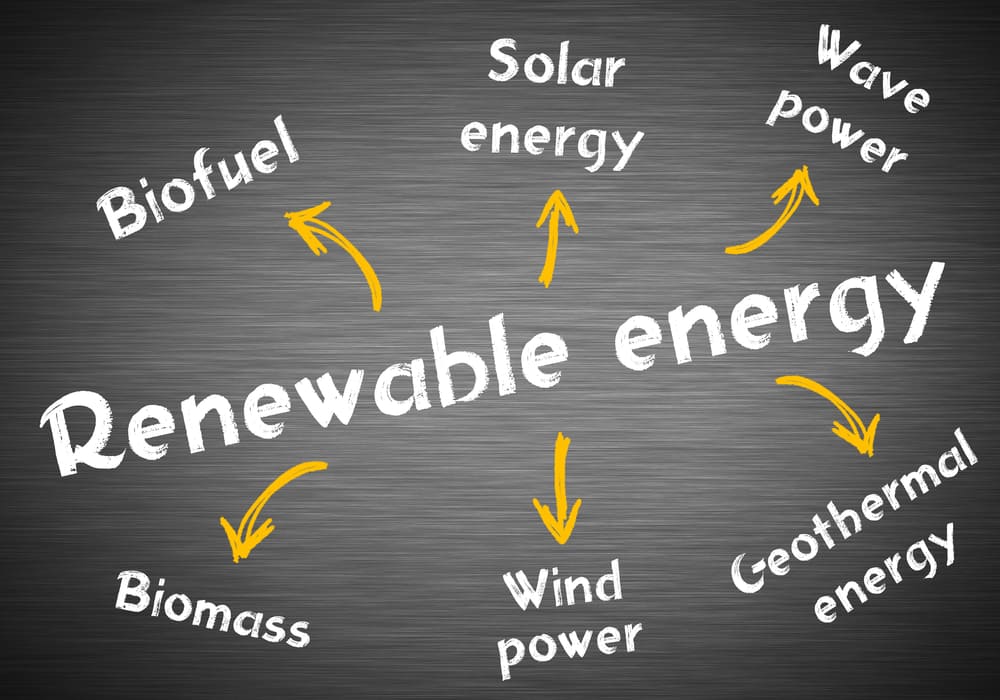Tidal Renewable Energy – Is it a Cost-Effective Renewable Energy Option?
As a company deeply invested in exploring the future of renewable energy, we see immense potential in harnessing tidal energy. While it's true that tides are a natural, renewable source, the challenge lies in making them cost-effective for consistent power generation. Currently, the strength of tides varies, which presents difficulties in extracting consistent energy from them.
Moreover, our current systems can only provide power for approximately 10 hours a day. This duration doesn’t quite align with peak electricity demands. However, we firmly believe in the untapped potential of tidal energy. Our team of dedicated scientists and engineers is relentlessly working on innovations to make tidal energy not only viable but also a leading source of clean power in the future.
What is Tidal Renewable Energy?
Tidal energy is one of the most promising emerging sources of renewable energy, and despite a few setbacks, the industry is poised to make a significant contribution to clean energy production.
Until the 19th century, incoming tidewater was retained in storage ponds and the outgoing tide's movement was used to turn waterwheels to mill grain. With the introduction of falling water and spinning turbines, this technology has the potential to generate 10%-20% of the world's electricity demand.
Although the tidal movement can cause turbines to generate electricity, the tidal energy produced so far is insufficient to power a conventional electrical grid. However, a project like this one proposed by Tidal Energy Corp. has already received approval from the Federal Energy Regulatory Commission.
If approved, the project will generate enough clean power to power the entire Alaska Railbelt grid and supply clean power to all Bush communities in Alaska. In addition to electricity production, tidal energy will also help in the creation of green hydrogen, a fuel that is both renewable and environmentally friendly.
Although not an efficient source of energy, tidal power can help generate a great deal of electricity. The tides are 12 hours long, and create an enormous amount of energy. Scientists have theorized that this energy can be harnessed using dams.
Those dams have a turbine connected to a generator, which turns when water flows in and out. This process is similar to wind turbines, but in this case, the water flows outward and spins the turbine, producing electricity.
How Does Tidal Energy Work?
Tidal energy is derived from the gravitational forces between the Earth, the moon, and the sun, resulting in the periodic rise and fall of sea levels known as tides. There are two main types of tides: spring tides, which are particularly high and low and occur twice a month during the full and new moon, and neap tides, which are less pronounced and occur during the first and third quarter moon. The movement of large volumes of water during these tidal phases creates kinetic energy, while the difference in height (or head) between high and low tides generates potential energy.
There are two primary methods to harness this energy: tidal stream systems and tidal range systems. Tidal stream systems utilize the horizontal movement of water with underwater turbines positioned on the seabed, capturing kinetic energy as water flows over them, much like wind turbines capture wind energy. On the other hand, tidal range systems exploit the potential energy created by the height difference between high and low tides.
Barrages or dams are built across the entrance of a tidal basin. When the tide rises, gates in the barrage close, trapping water inside. As the tide recedes, the potential energy of the trapped water is converted to electricity by releasing it through turbines in the barrage.
Types of Tidal Energy
Tidal energy, a form of renewable energy, leverages the gravitational forces between the Earth, moon, and sun, which drive the ocean's tides. The technology captures the kinetic and potential energy within these tidal movements. There are two main types of tidal energy systems that capitalize on different aspects of tidal forces: tidal stream systems and tidal range systems.
Tidal Stream Systems
Tidal stream systems, also known as tidal flow or current systems, harness the kinetic energy from the horizontal movement of water as tides flow in and out. These systems often utilize underwater turbines that are anchored to the ocean floor in areas with strong tidal flows. As water moves over these turbines, they rotate, driving generators that produce electricity. The turbines are carefully designed to capture energy from both incoming and outgoing tides, making them efficient in energy conversion. The placement and design of the turbines are crucial, as they must be situated in locations with significant tidal movements and must be engineered to withstand the harsh marine environment.
Tidal Range Systems
Tidal range systems exploit the potential energy created by the vertical difference in water levels between high and low tides. This type of system often involves the construction of a barrage or dam across the entrance of a tidal estuary or basin. When the tide comes in, sluice gates in the barrage are closed, trapping water inside a reservoir. As the tide goes out, the potential energy of the trapped water is converted to kinetic energy as it's released through turbines.
These turbines drive generators, producing electricity. The design and operation of tidal range systems are complex, requiring precise engineering and environmental considerations. Not only must they be efficient in energy conversion, but they must also minimize the impact on local ecosystems, as the alteration of natural tidal patterns can affect marine life and sediment transport.

Tidal stream generators
A tidal stream is a tidal current that travels in waves. Because the water is shallow near the coast, the movement of the tide is amplified.
The energy of these currents is captured by turbines and transmitted through underwater cables to the grid. Tidal stream generators can capture energy in places where land constrictions make land construction impossible. The MeyGen project is the world's largest tidal stream-generating station.
Current technologies for tidal energy generation are advancing slowly. While some companies have left the market before developing a viable product, others are now leading development and deployment of tidal power arrays.
Because the technology is still in its infancy, there are limitations to where the devices can be placed. Many locations don't experience the tidal conditions that make them effective for power generation. Additionally, these installations may not be near a power grid, which means additional investments for cables.
In terms of aesthetics, tidal stream generators offer significant advantages over other forms of renewable energy. The turbines are submerged and thus have less visual impact. They produce little noise and are less susceptible to wind-related noise pollution.
Additionally, they can be smaller than traditional wind turbines and use the Venturi effect to move water faster through their turbines. Tidal stream generators are currently installed in 19 countries, including the U.S., Canada, Australia, and South Korea.

Advantages and Challenges of Tidal Energy
Advantages of Tidal Energy:
- Renewable Source: Tidal energy is harnessed from the gravitational forces between the Earth, moon, and sun, which cause the tides. This natural occurrence ensures that tidal energy is a renewable resource that can be tapped consistently as long as these celestial bodies exist.
- Predictable: Unlike solar and wind energy, which can be intermittent due to weather conditions, tidal cycles are predictable. We can determine when and how tides will occur years in advance.
- High Energy Density: Water is roughly 800 times denser than air, so even a slow-moving tide can generate a significant amount of energy, more so than the wind at the same speed.
- Reduced Carbon Footprint: By replacing or reducing the use of fossil fuels, tidal energy can help in decreasing carbon emissions and other pollutants, making it an environmentally friendly option.
- Long Lifespan of Infrastructure: Once installed, tidal power plants, especially tidal barrages, have long operational lifespans. Some can function for several decades with minimal maintenance.
- Potential for Storage: With advancements in technology, there's potential to store tidal energy during peak production times and release it when demand is high.
Challenges of Tidal Energy:
- High Initial Costs: The installation of tidal energy systems, such as underwater turbines or barrages, requires a significant initial investment. These costs can be prohibitive, especially for developing nations.
- Environmental Concerns: Although tidal energy is clean, the installation and operation of turbines can disrupt marine ecosystems. There's potential for harm to marine life, from changing water flows to direct collisions.
- Location Specific: Only certain coastal regions have the necessary tidal range or tidal currents strong enough to generate power efficiently. This limits where tidal power plants can be established.
- Maintenance and Durability: The saline marine environment can be corrosive and wear down equipment over time. Maintaining and replacing parts can be challenging and costly due to the underwater location.
- Energy Generation Periods: Tidal energy can be generated only during tidal movements, which means it's not a constant source of power. Depending on the technology, energy might be generated for about 10 hours a day.
- Infrastructure Impacts: Building structures like tidal barrages can change the tidal level in estuaries and potentially impact the local environment, including changing sediment patterns or affecting bird migration.
Tidal barrages
Tidal barrages, also known as tidal power plants, are marine renewable energy systems that harness water's kinetic energy to create electricity.
Like hydroelectric power plants, tidal barrages use the water's two-way flow to convert energy into electricity.
These systems are also relatively inexpensive to build and maintain, but they do have some disadvantages. A 2010 US National Oceanic and Atmospheric Association report, Environmental Effects of Tidal Energy Development, identified several negative impacts from this marine renewable energy technology.
Tidal barrages, or tidal dams, are very effective in harnessing the energy from the tides. Barrages are constructed across river estuaries and have tunnels with turbines.
The barrages' lifespan is about 100 years, though one barrage, La Rance in France, has been operating for over fifty years and continues to generate a significant amount of electricity every year.
In order to produce electricity from tidal barrages, a large reservoir is flooded during incoming high tides. The resulting tidal reservoir will become empty when the tides recede. A similar structure, known as a tidal lagoon, operates in a similar fashion.
Unlike a tidal barrage, a tidal lagoon does not span the tidal estuary itself. The lagoons function in conjunction with a breakwater and create a constrained body of water.
Tidal energy converters
One of the biggest obstacles to commercializing tidal energy is its high cost. The technology is in its infancy and requires large tidal ranges and narrower waterways with stronger tidal currents.
With worldwide energy demands on the rise, researchers have recognized the potential of ocean currents to produce energy. The DOE estimates that the energy generated by ocean currents could power millions of homes.
The main environmental concern with tidal energy converters is the risk of marine organisms being pulled by the turbine blades. Moreover, the higher the speed of the water, the greater the risk of organisms being entangled near or even pulled through the turbines.
In addition, the turbine blades are exposed to electromagnetic fields and acoustic outputs that may affect marine organisms. This issue can only be solved by further testing.
The first challenge is how to design a tidal energy converter that can be installed and operated without a large capital investment. While it may be expensive to build and maintain a large-scale tidal array, it is possible to construct one that is cost-effective.
The design process includes a mathematical model to calculate the rotor blades' hydrodynamics and a computational algorithm to optimize the turbine's blades for maximal annual output. The experimental data from full-scale tests of the turbines were used to validate the results. The predictions agreed with the experimental data.
Tidal power plant
A tidal power plant uses tides to generate electricity. Typically, it uses a series of small turbines that are installed along the barrage. These turbines can harness the energy available much more efficiently than larger turbines.
The design of a tidal power plant also depends on its location. The water level is usually at its lowest along the coast. The water level also varies significantly during tidal events.
While tidal power generation is still in its infancy, the amount produced has been relatively small, with only two commercial-scale tidal power plants in operation. The biggest facility is located in South Korea, with a capacity of 254 megawatts.
The United States currently does not have a tidal power plant, but China, France, England, and Canada are considering using this renewable energy source.
In 2013, a marine energy developer, Atlantis Resources Corp., announced plans to build a 50-megawatt tidal power plant in the Gulf of Kutch. This project will replace coal in the grid in Digby Neck, which supplies around half of the province's electricity.
The tidal power plant resembles a dismasted trimaran and is the only one in North America operate. It is non-polluting and works in calm conditions.
Another major concern regarding the impact of tidal power is the effect it may have on marine life. The spinning blades of tidal turbines can accidentally kill swimming sea life.
Because of this, environmental monitoring has been conducted to ensure that these tidal energy generators do not have a negative impact on marine life. The Tethys database provides detailed information on the effects of tidal power on marine life.
Tidal energy cost
Tidal energy is a promising form of green energy. The tides are caused by the gravitational pull of the sun and moon and cause water levels near shore to rise and fall by as much as 40 feet.
As far back as more than a thousand years ago, Europeans began harnessing the movement of water to run mills. Today, tidal energy systems can generate electricity, but you'll need to locate a site where the tidal range is at least seven meters to be economically viable.
While tidal turbines are useful for generating electricity, they are harmful to marine ecosystems. They can disrupt sea creature movement, trapping them in the blades, and altering the levels of silt and salt.
Some research suggests that underwater noise turbines may interfere with sea creatures' communication, and electromagnetic fields emitted from power lines may harm sensitive species. And because of these turbines' erratic movements, fish cannot easily move between locations, which reduces their food supply.
Though tidal energy is greener than wind power, it has significant technology costs. Its components must be durable, corrosive-resistant, and well-insulated. Because tidal power plants are often located in the water, they must be built offshore.
Conclusion
Reflecting on the vast ocean of information about tidal energy, I'm genuinely captivated by the duality of this resource. On one hand, the predictability and vast potential of tidal energy is undeniably alluring. The ebb and flow of tides, dictated by the celestial dance of the Earth, moon, and sun, offers a seemingly boundless well of energy that humankind has only begun to tap. The historical narratives of mills turned by tides and the intriguing evolution into modern tidal turbines and barrages is a testament to our age-old fascination and reliance on the seas.
Yet, on the other hand, the challenges of harnessing this energy are palpable. Beyond the technical and economic barriers, the environmental concerns resonate with me deeply. The delicate balance of marine ecosystems, the silent communication among sea creatures, and the potential impact of these massive structures on them remind us of the profound responsibility we carry.
Sources:
- “Tidal Energy: A Primer” by the National Renewable Energy Laboratory https://www.nrel.gov/docs/fy12osti/53712.pdf
- “Tidal Energy: Pros and Cons” by Power Technology https://www.power-technology.com/features/featuretidal-energy-pros-and-cons/
- “The Pros and Cons of Tidal Energy” by Treehugger https://www.treehugger.com/pros-and-cons-tidal-energy-4869314

